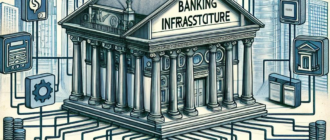In the modern banking landscape, the integration of Artificial Intelligence (AI) has transformed how financial institutions operate, particularly in the realm of fraud detection and security solutions. As cyber threats evolve, banks are increasingly turning to AI to enhance their defenses and protect both their assets and their customers’ information.
Understanding Fraud in Banking
Fraud in banking can take many forms, including:
- Account takeover
- Identity theft
- Credit card fraud
- Wire transfer scams
- Phishing attacks
With the rise of online banking, the opportunities for fraudsters have also increased, necessitating robust security measures. Traditional methods of fraud detection, while still relevant, often fall short in identifying sophisticated schemes that utilize advanced technology.
The Role of AI in Fraud Detection
AI technologies, particularly machine learning algorithms, have begun to play a vital role in detecting and preventing fraudulent activities in banking. Here are some key ways AI is being employed:
1. Real-Time Transaction Monitoring
AI systems can analyze thousands of transactions in real-time, looking for patterns that may indicate fraudulent behavior. By learning from historical data, these systems can identify anomalies that a human might miss, such as unusual spending patterns or transactions from unfamiliar locations.
2. Predictive Analytics
Through predictive analytics, AI can forecast potential fraudulent activities based on data trends. By examining previous fraud cases and user behavior, banks can proactively implement measures to prevent future incidents.
3. Enhanced Customer Verification
AI technologies, such as biometric recognition (fingerprint or facial recognition), improve the verification process for customers. This reduces the chances of unauthorized access to accounts, making it harder for fraudsters to succeed.
Benefits of AI in Banking Security
The implementation of AI in banking security provides several advantages:
- Increased Efficiency: AI can process vast amounts of data much faster than human analysts, allowing for quicker responses to potential threats.
- Improved Accuracy: The accuracy of fraud detection improves as AI systems learn from new data, reducing the number of false positives.
- Cost Reduction: By automating processes, banks can reduce operational costs associated with fraud detection and prevention.
- Enhanced Customer Trust: Improved security measures increase customer confidence in banking institutions, fostering loyalty and satisfaction.
Challenges and Considerations
While AI offers significant advantages, there are challenges that banks must address:
- Data Privacy: The use of AI requires access to vast amounts of personal and financial data, raising concerns about privacy and data protection.
- Algorithmic Bias: AI systems can inadvertently learn biases present in historical data, leading to unfair treatment of certain customers.
- Integration with Legacy Systems: Many banks still rely on outdated systems, making the integration of AI technology more complex.
Future Trends in AI and Banking Security
As technology evolves, so too will the methods used to combat banking fraud. Some anticipated trends include:
- Collaboration with Fintech: Banks may partner with fintech companies to leverage innovative AI solutions tailored for security.
- Adoption of Blockchain Technology: Blockchain’s transparency and security features could complement AI efforts in fraud prevention.
- Continuous Learning Systems: AI systems will likely become more adaptive, constantly learning from new threats and user behavior.
AI is revolutionizing fraud detection and banking security solutions, providing banks with the tools they need to protect against increasingly sophisticated threats. While challenges remain, the benefits of AI in enhancing security measures are undeniable. As the banking sector continues to embrace these technologies, customers can expect a safer banking experience, ultimately leading to a more secure financial environment.






